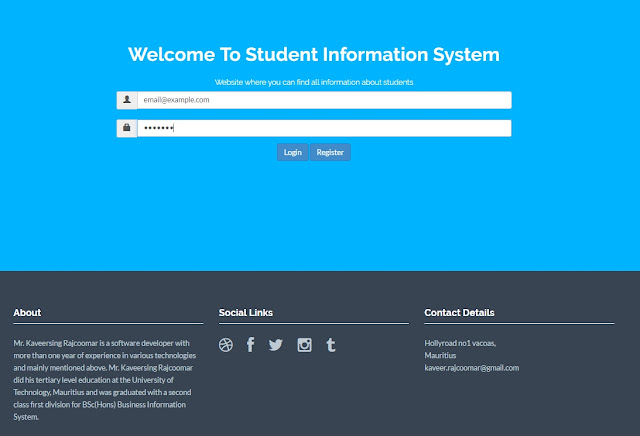Understanding the MVC Pattern
Understanding the MVC Pattern
MVC (Model-View-Controller) is a software architectural pattern commonly used for developing user interfaces, especially in web applications. It helps in organizing the code in a way that separates the concerns of data, user interface, and the logic that connects the two. MVC makes the application more modular, maintainable, and testable.
MVC Components:
- Model:
- Definition: The model represents the application's data and the business logic. It directly manages the data, logic, and rules of the application.
- Responsibilities:
- Represents the state of the application.
- Fetches data from the database (using ORM tools like Entity Framework).
- Contains business logic and validation rules.
- Sends data to the view.
- Can notify the controller of any changes or updates.
- View:
- Definition: The view is the presentation layer, representing the UI (User Interface) elements. It is responsible for displaying the data to the user and sending user inputs to the controller.
- Responsibilities:
- Displays data (from the model) to the user.
- Sends user input (events like button clicks or form submissions) to the controller.
- Is passive and does not contain business logic.
- Can be made dynamic by embedding templates with data from the model (in the case of web applications, it would be HTML/CSS/JS).
- Controller:
- Definition: The controller acts as an intermediary between the model and the view. It listens for user input from the view, processes it (with help from the model), and updates the view accordingly.
- Responsibilities:
- Handles user inputs (such as HTTP requests in web applications).
- Calls the appropriate methods in the model to retrieve data or perform business logic.
- Updates the view (or passes data to the view).
- Decides which view to show based on the user’s actions (can redirect or return views).
Flow of Control in MVC:
- User Interaction (View): The user interacts with the view, like clicking a button or submitting a form.
- Request Handling (Controller): The controller receives the user's request. It processes the input, often by calling the model to retrieve or update data.
- Business Logic (Model): The model handles the business logic, such as querying a database, performing calculations, or validating data.
- Updating View: After processing the request, the controller sends the result to the view. The view is updated with new data or content.
- Rendering View: The view is rendered and displayed to the user.
MVC Example in a Web Application (ASP.NET Core)
In an ASP.NET Core MVC application, you can typically see the structure as follows:
- Model: A class representing data (e.g.,
Product,Order, etc.). - View: An HTML page with Razor syntax to display dynamic data.
- Controller: A C# class that responds to user requests.
Example:
Model (Product.cs):
public class Product
{
public int Id { get; set; }
public string Name { get; set; }
public decimal Price { get; set; }
}
Controller (ProductController.cs):
public class ProductController : Controller
{
public IActionResult Index()
{
var products = new List<Product>
{
new Product { Id = 1, Name = "Laptop", Price = 1200 },
new Product { Id = 2, Name = "Smartphone", Price = 700 }
};
return View(products); // Passes products to the view
}
}
View (Index.cshtml):
@model IEnumerable<Product>
<h2>Product List</h2>
<table>
<tr>
<th>ID</th>
<th>Name</th>
<th>Price</th>
</tr>
@foreach (var product in Model)
{
<tr>
<td>@product.Id</td>
<td>@product.Name</td>
<td>@product.Price</td>
</tr>
}
</table>
Explanation:
- Model:
Productclass represents the data that we will display. - Controller:
ProductControllerhandles the HTTP request and retrieves a list of products, then passes them to the view. - View:
Index.cshtmlis the view, which renders the product data inside an HTML table using Razor syntax.
Benefits of Using MVC:
- Separation of Concerns:
- Model: Manages data and business logic.
- View: Displays UI elements to the user.
- Controller: Handles input and updates the view.
- Maintainability:
- Because the logic is divided into three components (Model, View, Controller), it's easier to maintain and update code.
- Developers can work on the backend (Model and Controller) without affecting the frontend (View) and vice versa.
- Testability:
- The separation makes it easier to write unit tests. For example, the controller can be tested independently of the view.
- Flexibility:
- Multiple views can be connected to the same model (e.g., a web view, an API, and a mobile view could use the same backend model).
- You can change the UI without affecting business logic, and vice versa.
- Scalability:
- The MVC pattern supports building applications that can easily scale by keeping the components loosely coupled.
Conclusion:
The MVC pattern is a great way to structure applications, especially web-based applications. It enables better separation of concerns, improves maintainability, and enhances the testability of the code. ASP.NET Core MVC leverages the pattern to create powerful, scalable, and maintainable web applications, making it a popular choice for modern software development.



Comments
Post a Comment